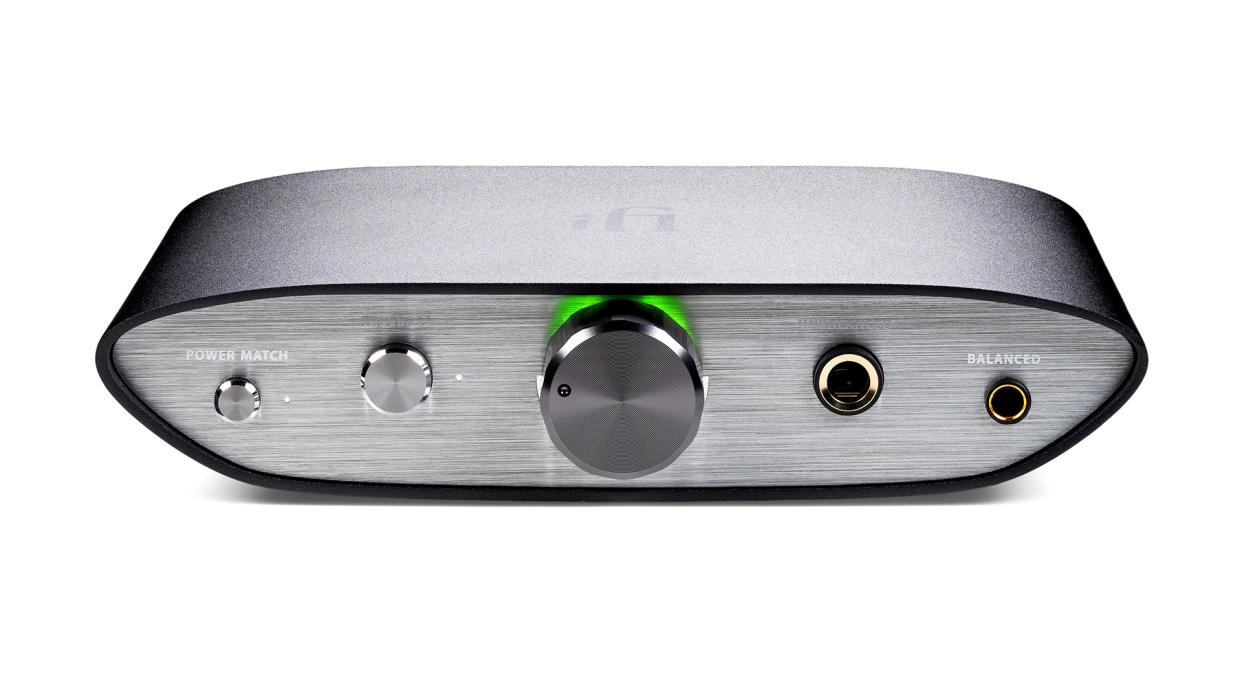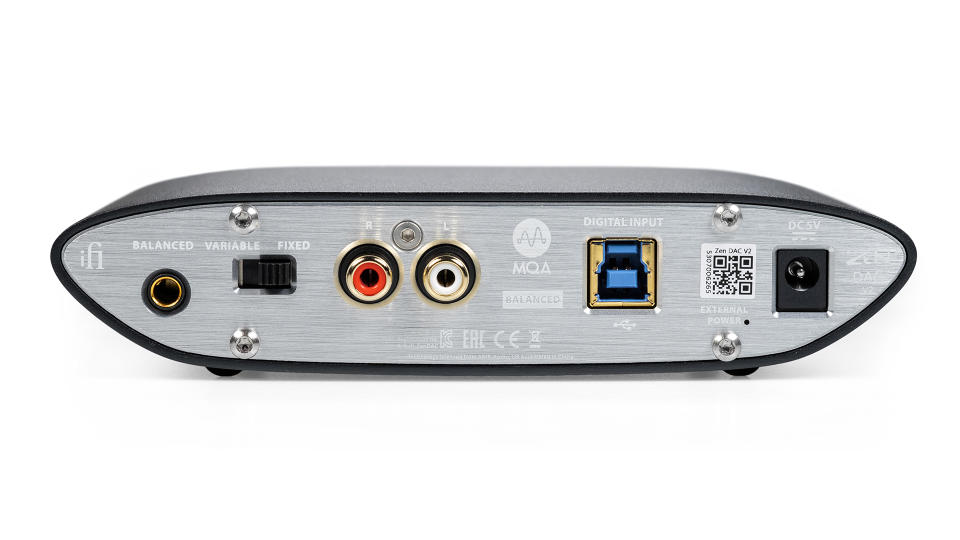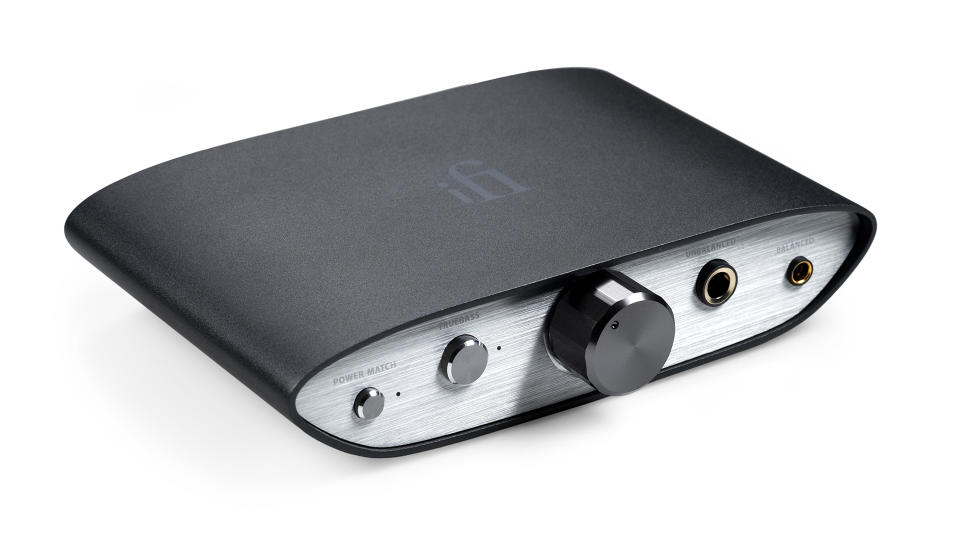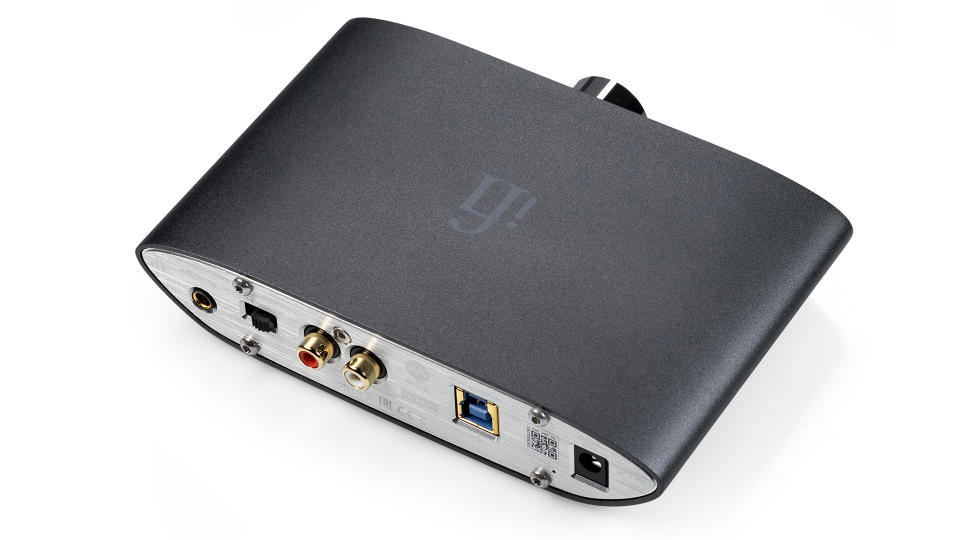iFi Zen DAC V2

The ‘if it ain’t broke…’ saying isn’t lost on us. But at the same time we realise that in a competitive industry such as hi-fi, making the best even better off your own back isn’t necessarily a bad idea. It’s what iFi has done with its budget home DAC and headphone amp offering, with the original Zen DAC now making way for a ‘V2’ model.
The sequel uses the new-generation processing chip found in the higher-ranging Neo iDSD and iDSD Diablo DAC/headphone amps, delivering double the clock speed and four times the memory of the chip inside the original. As well as supporting PCM (up to 384kHz) and DSD (up to DSD256) files, the Zen DAC V2 is also an MQA (Master Quality Authenticated) decoder this time, as opposed to simply a renderer, as the original Zen DAC is. That means it brings full MQA decoding onboard, taking over the entire ‘unfolding’ process that music encoded in the technology requires to be played back in its most accurate form. That should be music to the ears of Tidal HiFi Plus subscribers who devour the service’s MQA-encoded hi-res Masters.
Last but not least, iFi has also tweaked the circuitry, which now includes a new crystal clock that has been designed to improve timing and further reduce jitter.
Features

These under-the-hood advancements aren’t, of course, obvious to the naked eye, which would have some trouble telling the new Zen DAC from its predecessor looking at the two side by side. Their exteriors are identical, save for the discreet ‘V2’ corner mark on the new model’s rear panel. Next to it, as on the V1’s panel, is a USB Type B input and RCA line and 4.4mm Pentaconn balanced outputs.
The output of the Zen DAC can be switched between fixed and variable, meaning the iFi can operate as a digital preamp if you so wish; the Pentaconn output is quite a niche connection for this level of kit, but it’s there if you want it. The same goes for the Pentaconn balanced output found on the front panel, which sits alongside the more conventional 6.3mm unbalanced headphone socket, a trusty volume dial, and buttons for two modes. The first, Power Match, is essentially gain adjustment to help accommodate the varying sensitivity of headphones, while True Bass is for boosting the bass presence in a mix.
iFi Zen DAC V2 tech specs

Outputs RCA, balanced 4.4mm x2, 6.3mm
Inputs USB Type B
Supported files PCM 384kHz, DSD256, MQA
Dimensions (hwd) 35 x 160 x 117mm
Weight 0.8kg
The final port in the Zen DAC V2 is reserved for mains power, although it should be noted that a mains adapter doesn’t come in the box. iFi has omitted it to keep costs down – and because one won’t necessarily be necessary for everyone. The Zen DAC V2 can be powered via its USB socket alone, drawing power from the source connected to it, however the mains route is recommended with tougher-to-drive headphones that require more power. Any 5V AC/DC adapter can be used, but iFi would naturally point you to its own iPower (£49 / $49 / AU$80) or iPower X (£99 / $100 / AU$159) power supplies.
Neither of those accessories is on test here, although note that we tried the iPower X with the original Zen DAC and said it “definitely improves the sound in all areas”, so there’s no reason to think it would play ball any differently with this new model. We do borrow the mains adapter from a previously tested iFi component as we hook the Zen DAC V2 up to our hi-fi system (via an iFi-supplied 4.4mm Pentaconn to XLR cable), and then in a desktop configuration. But it should be said that the power provided from the connected MacBook Pro (and also an iMac) source over USB proved sufficient enough to drive all manner of headphones we used during testing, from the Grado SR325x to the Beyerdynamic T5 (3rd Gen) and Focal Stellia.
Sound

We familiarise ourselves once again with the Zen DAC’s clear, tonally even-handed and insightful sound – all pleasing characteristics that we’re happy if not surprised to hear materialise in the Zen DAC V2’s performance when we switch to it. We hailed the Zen DAC for offering a significant upgrade on a computer’s audio quality for not much money, and the Zen V2 achieves that to an even greater extent. Indeed, what’s most pleasing is that iFi hasn’t launched a pricier sequel that only brings subtle improvements.
The Zen DAC V2 is notably better: still open, smooth and nicely judged in its handling of frequencies, only this time dynamic expression and clarity are confidently taken to the next level, with the bass a little tighter and the presentation slightly more refined too.
Play a Tidal Master of Billie Eilish’s Your Power between the two, and the new Zen DAC offers a wider window into a recording. Greater clarity instantly pulls you into the pop ballad, making her delivery of its important, timely message all the more poignant, and fleshing out piano notes that consequently convey that extra emotion. Over to Tyler, The Creator’s I THINK and the opening crackling is more atmospheric, the background piano pattern and drum beat sample are more present, and the dynamic inflections in his vocal delivery are more apparent.
Even listening through the Grados, the least revealing pair of the trio of headphones we mainly use, the V2’s sonic step-up is plain as day.
Verdict
Nothing in life is free, of course, so iFi asks a £30 ($30 / AU$30) premium over the defunct Zen DAC. But we think it’s justified.
Zen DAC owners with price-compatible headphones may not feel an urge to rush out and upgrade to the V2 unless they can get a decent return on their original – the V2 is, despite pedalling performance forward, evolution over revolution – but for newcomers to the company or type of product, iFi is offering a good jump in quality here to keep performance and features best in class.
Offering a significant upgrade over computer sound quality in an era where people need it most, the Zen DAC V2 is another feather in the cap for iFi’s budget Zen series.
SCORES
Sound 5
Features 5
Build 5
MORE:
See all the What Hi-Fi? Award 2023 winners
Read our round-up of the best DACs
DACs Q&A: what is a DAC? And do you need one?
7 reasons why a DAC could be your music purchase of the year
